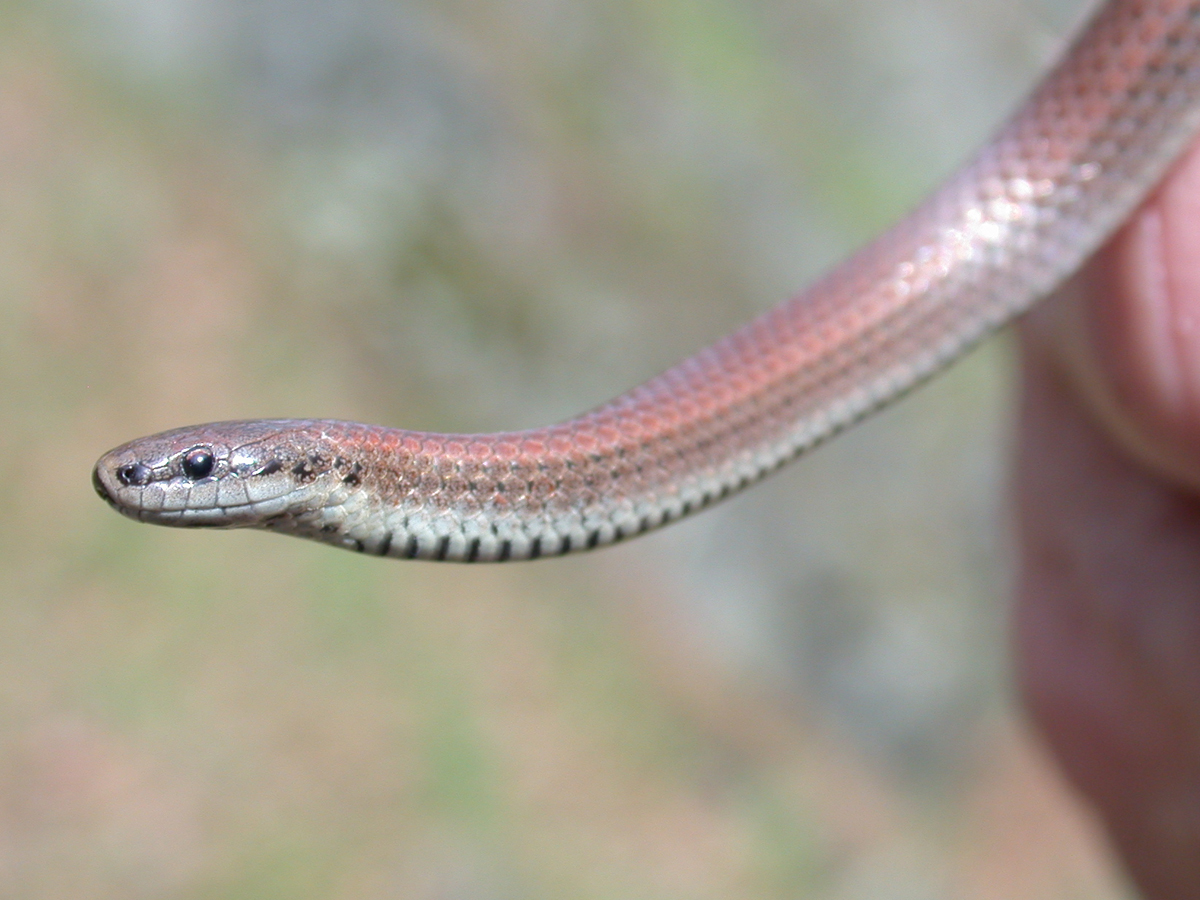Biologists employ microchips to track elusive snake species on Base
By Lookout Production on Nov 10, 2022 with Comments 0

A Sharp-tailed snake, an endangered species. Their small size and secretive nature makes them difficult for biologists to study.
Peter Mallett,
Staff Writer
—
A new wildlife conservation effort at CFB Esquimalt is underway: a multi-year research project to monitor the population and movements of Sharp-tailed snakes.
The species is listed as endangered under the federal Species at Risk Act (SARA).
“We hope the results will support more accurate mapping of critical habitat and improve habitat protection,” said Cain van Cadsand, Environmental Officer with Base Safety and Environment (BSE).
The research takes place at select locations, including the DND Heals Rifle Range property, with specialized detection equipment. It is a collaborative effort between Department of National Defence (DND), Environment and Climate Change Canada (ECCC), B.C. Ministry of Environment and Climate Change Strategy, Natural Resources Canada, and Biolinx Environmental Research Ltd.
Sharp-tailed snakes (Contia tenuis) are small, harmless reptiles that live mostly underground or under cover objects such as rocks and logs, and almost never come out in the open. They are elusive which makes them hard to detect and monitor.
Following the discovery of Sharp-tailed snakes at Heals Rifle Range in 2003, Base Safety and Environment contracted species experts to survey various CFB Esquimalt properties. They found the species at the Mary Hill property as well.
During that time, biologists used artificial cover objects such as asphalt roofing shingles to survey and monitor the species. These provided warm sheltered sites and allowed easier species detection.
The current research will use an automated monitoring system to record data 24 hours per day to provide more detailed information on movements and habitat use, complementing previous methods.
“It is critical for us to know where these snakes are and what type of habitat they need for survival, to comply with SARA and protect this rare species,” van Cadsand said.
Kristiina Ovaska, Biolinx senior ecologist and co-owner, said Passive Integrated Transponder (PIT) telemetry helps the team track the elusive snakes as they are too small for radio-telemetry conventionally used to track wildlife movements.
“PIT-tags are surgically inserted into the body cavity of snakes, allowing us to track their movements with handheld and automated readers,” Ovaska said. “The PIT-tags identify the individual snakes, and an automated reader housed within a central control box detects the snakes within the reach of antennae placed in the habitat 24 hours a day. Solar panels power the system.”
So far 11 snakes have been PIT-tagged at Heals Rifle range this year, and more snakes are expected to be tagged next year.
The ECCC Canadian Wildlife Service and B.C. Ministry of Environment and Climate Change supplied monitoring equipment for Biolinx staff. Four systems have been installed at a federal property on Observatory Hill in Saanich, managed by the National Research Council. Two systems were installed at Heals Riffle Range on the top of Cole Hill this September. Since each set weighs over 400 lbs, the equipment was airlifted to Cole Hill on Sept. 28 by a CH-148 Cyclone helicopter from 443 Maritime Helicopter Squadron.
“We hope new information will aid in recovery of this rare species,” said Ovaska. “The monitoring of PIT-tagged Sharp-tailed snakes on two sites, now including Cole Hill, will help generalize the results across the species’ range.”
The monitoring project will take approximately three to five years to complete and will be evaluated annually, depending on funding.
For more information about Sharp-tailed snakes and their habitat, visit the Habitat Acquisition Trust (HAT) webpage: https://hat.bc.ca/sharp-tailed-snakes. The status report can be found at the Species At Risk (SARA) registry.
Filed Under: Top Stories
About the Author:





